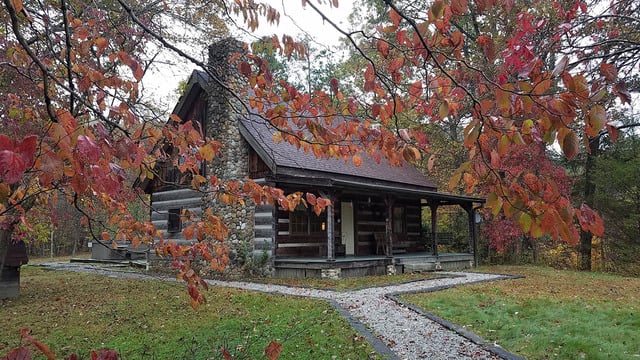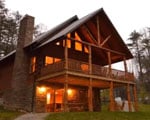LAKE ALMA STATE PARK
In the midst of some of Ohio's most rugged, scenic territory lies Lake Alma State Park. A quiet lake and a gentle creek meandering through a wooded valley provide a restful setting for park visitors.
Lake Alma lies nestled in the heart of the unglaciated hill country of Ohio. These hills are part of the Appalachian Highlands. Most of the rock layers are acidic sandstones, shales and coals with an occasional limestone member. Much time has passed since the region was first uplifted from the ancient sea that once covered Ohio--allowing for the development of many different habitats. Today, this region supports more than seventy percent of Ohio's remaining woodlands on only one-third of the state's land. Lake Alma contains a fine example of the second growth forest now covering this part of the state. In this area, the forest is mainly of a mixed oak composition.
With the advent of forest succession on surrounding farmlands, upswings in the population of deer, grouse, gray squirrel and other woodland species were encouraged. In the late 1950s, wild turkeys were reintroduced into this part of the state giving Vinton County the highest population of this species. Other valuable resources found at Lake Alma include a vast array of woodland wildflowers such as large-flowered trillium, wild geranium and hepatica. The forest floor is blanketed with a variety of ferns, mosses and lichens. The woodthrush, pileated woodpecker, great-horned owl and barred owl make this park their home.
A wilder country than this in early days would be hard to imagine. Rocks and intermingled forests, Indians, wolves, wild game and snakes were more numerous than interesting.
After the Treaty of Greenville of 1795, the Indian threat in the Ohio territory subsided, clearing the way for settlement. The first geological survey of Ohio revealed that Vinton County was rich in mineral resources. Millstone, coal and iron ore provided the resources for flourishing industries.
The charcoal iron industry spurred growth in this Hanging Rock iron region. From 1818 to the turn of the century, thousands of acres of woodlands were cut to fuel the 46 furnaces in the region. At its peak in the mid-1800s, Ohio was the nation's leading producer of iron for implements and weapons. The millstones quarried along Raccoon Creek helped alleviate the dependence upon imported French and Pennsylvania buhrstone. The Raccoon Creek quarry was only one of eight millstone manufacturers in Ohio in the mid-1800s.
For a time, coal was an important Vinton County export. Its importance has waned in this century but continues to provide a boost to the local economy. The timber industry is the county's most important business today. Vinton County is the least populated and most heavily forested county in the state.
Built in 1903 by the late C.K. Davis, a wealthy coal operator, Lake Alma was originally constructed as an amusement park. The park then boasted a large dance pavilion, outdoor theater, a merry-go-round and several other rides. This attraction prospered only until 1910 and was later purchased by the city of Wellston for a municipal water supply. The city leases the area to the ODNR Division of Parks and Recreation for operation as a state park.
Ohio does not have an annual pass and does not charge entrance fees to state parks.
GeneralLand, acres292
Water, acres60
Nearby State Forest, acres2,500
Nearby Wildlife Area, acres1,825
Day-UseFishingyes
Hiking Trail, miles4
Picnickingyes
Picnic Shelters, #3
Swimming Beach, feet550
Beach Concessionyes
Nature Centeryes
Nature Programsyes
BoatingBoat Rentalyes
Boating Limits-1
Launch Ramps, #1
CampingPrimitive, #10
Electric Sites, #71
Pets Permittedyes
Dumpstationyes
Camper Cabins, #1
Group Campyes
WinterSleddingyes
Cross-Country Skiingyes
Ice Skatingyes
Ice Fishingyes
Lake Alma offers 60 campsites suitable for tents or trailers. All sites are wooded and have electricity. Pet camping is available on designated sites. Facilities include pit latrines, tables, fire rings, dump station and drinking water.





